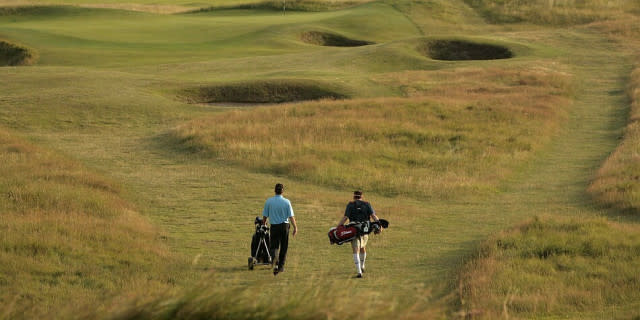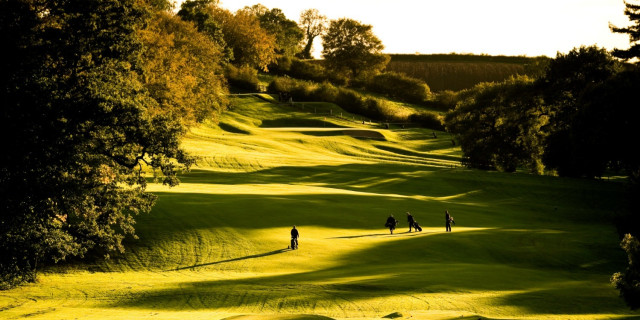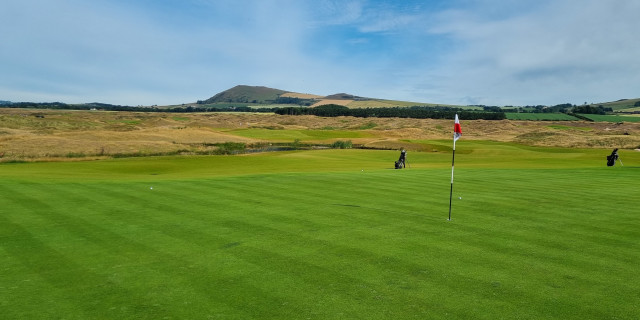
Are Membership Costs Too High And Green Fees Too Low?
Following the 2019 Golfshake Survey, which was completed by over 3,500 golfers, we have analysed our data and ask you the question - is the cost of golf skewed in the wrong direction - should greens fee rise but membership prices reduce?
Data from 2019 and also 2018 highlights that this may be true. When asked - 'How big an issue is' in relation to 'The price of membership is unaffordable' over 65% of the non-club golfers rated this at 7/10 (10 being the highest). Compared to 'The price of green fees too high' where only 40% of golfers rated this at 7/10. Additionally, when asked 'How big an issue is' in relation to 'Getting value from a golf club membership' once again 65% of the non-club golfers rated this at 7/10.
Now this could simply be that the non-club golfer audience that completed our survey isn't really the target demographic for club membership, but almost 20% of the non-club golfers stated 'they hope to join a club soon' and the biggest factors in helping make that decision were:
- Ensuring the cost of membership was more affordable
- That membership packages were more flexible and reflected the amount of golf they would like to play
- Had more reciprocal options with other clubs
- Multiple course options not tying them to one course
Featured Content
Time does factor into some of the reasoning behind not currently being a member of a club but, the above highlights that the non-club golfer is very clearly focused on ensuring they get value for money, and the variety of golf courses played is important, something best achieved through just playing nomadically.

Membership - Offering the Right Package at the Right Price
Additional data from the 2018 Survey focused around golf participation of club and non-club golfers. Unsurprisingly, club golfers played a lot - but you would if you had paid for it. Whereas the non-club golfers had a more seasonal approach to golf. The following data provides the averages for non-club golfer playing habits and green fees:
- Peak Season (Apr-Sep) - average 20 rounds, once per week
- Off-Peak Season (Oct-Mar) - average 6 rounds, once per month
- 72% also play on average around 5-7 different courses per year
- 64% on average pay around £20-£25 per green fee
The above analysis highlights that the average non-club golfer is playing the same course around 4-5 times during the peak season and spending around £400-£500 on green fees during the peak season. So, what could be done to encourage them to play more or even become a member of one of these clubs?
Golf clubs could look to introduce loyalty schemes similar to what you get at a coffee shop - play five rounds and get your sixth free. It may be that points-based membership schemes are the way forward with this demographic given they like variety and want to ensure what they spend reflects the amount of golf they play. Or quite simply golf clubs continue to adapt their packages and offer seasonal membership - something we have covered before - and also ensure that they have reciprocals and links ups with other courses. There is even a golf club offering annual membership for £1 - you simply pay a green fee each time you play and the membership even provides access to an official handicap.
Whilst some may question why you would offer membership for £1, first and foremost they are providing marketing outreach and targeting potential members. For £1 you've got nothing to lose - you may even find you enjoy the competitive aspects and handicaps, build up some loyalty and then ultimately become a full 7-day membership paying the standard rate of £860 for unlimited golf.

Green Fees - Bucking the Trends of Price Rises
But in relation to membership and green fees is it just a simple question of basic mathematics? Are some green fees too cheap and should the price increase to incentivise those who are members?
Based on an annual golf club membership of £1,000 and playing once a week, this equates to a cost per round of £19, excluding all the additional benefits you get by being a member of a golf club.
For the golfers that are more seasonal and based on only playing 30 times, then this cost per round jumps up to £33. With average green fees now around £30, is membership even worthwhile if you don't plan to play every week?
Research by Golfshake identified that some green fees have decreased by up to 20% over the last 10 years, although many courses have also increased prices by 10-20% over the last decade. How does this stack up against other areas of modern-day life? Whilst bread (according to the RPI) is cheaper and milk a similar price over the last 10 years, luxury items such as coffee and avocados have increased by around 25%. Additionally, using an online tool to compare 2010 - 2020, the data highlights:
- Salaries have risen by 15%
- House prices have risen 4%
- Shopping costs have risen 26%
- Fuel costs have risen by 30%
So why have some green fees decreased or only marginally increased - is it cheaper to run a golf club in the '20s than back in '00s?
For golf clubs to increase green fees it would require a great conviction in the strategy and also belief and passion with the product on offer - the golf course.
From a business perspective, it isn't a simple decision either because if visitor green fees are an important revenue stream this could have an immediate knock-on effect, and one of the issues driving down prices over the last few years has simply been competition from the golf club 'down the road'.

Adapting to Modern Society
In modern-day society consumers quite clearly want value for money and they are fully in control of how they spend their money. This does mean membership could be right for some golfers, but it just needs to be at the right price. Additionally, increasing green fees may not create any negative effects so long as golfers still see the value in what they are buying - access to the golf course. Also, is there anything wrong with pricing higher when courses are already busy? Discounted green fees are still important and provide a great opportunity to fill a golf course at quiet times - which may mean there isn't anything untoward with a 30% reduction.
One thing for certain is that over the last 15 years golf has adapted considerably and the golf consumer is now fully in control in terms of what they are paying, and how and when they pay. Thankfully most golf clubs continue to adapt with many taking advantage of the opportunities now on offer in terms of how they can reach and advertise to golfers in the digital age.
So what do you think? If golf courses increased their prices by 20% in line with the data above how would you take this? Would you see any issue if a green fee rose from £25 to £30? Equally, would a 15% reduction in membership encourage you to become a member? Or increased incentives with local club reciprocal deals?
Let us know your thoughts in the comments below.
Related Articles
6 Things Your Golf Club Must Do in 2020
What Golf Needs to Change in the 2020s
Has Club Golf Moved Forward During the Past Decade?
Tags: Survey Memberships industry insider Green Fees Golf Clubs daily picks









